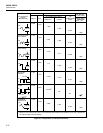
Additional Considerations
Making Mixed Measurements
5
5-9
average-responding measurement devices display the correct rms reading of 1.0000V
(the dc component equals 0). However, consider the 2V (peak-to-peak) square wave.
Both types of measurement correctly display the dc component (0V), but the instrument
also correctly measures the ac component (1.0000V). The average-responding device
measures 1.111V, which amounts to an 11% error.
Average-responding measurement devices have been in use for a long time; you may
have accumulated test or reference data based on such instruments. The conversion
factors in Figure 5-3 can aid in converting between the two measurement methods.
Making Mixed Measurements
With multiple channels, Hydra Series II allows mixing of measurement types. But the
possibility of the ac signal on one channel affecting measurements on other channels
must be considered. This effect is known as cross talk.
The ac volts signal could be either a voltage that is to be measured on another channel
(which is known as a normal mode signal) or an ac voltage signal on another channel
that is present between the channel inputs and earth ground (which is known as a
common mode signal). A common mode signal could occur, for example, if an
unshielded thermocouple were to be used to measure the metal case temperature of an ac
power line diode.
AC voltage cross talk can affect the various measurement types differently. It can cause
other ac voltage measurements to read too high. DC and resistance (OHMS)
measurements could either shift or read noisy. Frequency measurements could be noisy,
or, in the extreme case, the cross talk frequency could actually become the measured
signal.
Cross talk can occur at numerous places: in the device or process being monitored, in the
wiring to the Hydra Series II instrument, or within the Hydra Series II instrument itself.
Fortunately, precautions can be taken to provide error-free measurements by minimizing
the effects of cross talk. Use the following guidelines to minimize cross talk between ac
volts signal inputs and other sensitive channels:
• Keep any input wiring carrying ac volts signals physically separate from other
sensitive channel’s input wiring.
• Avoid connecting inputs with ac volts signals adjacent to sensitive channel inputs.
(Leave unconnected channels between the inputs, if possible).


















